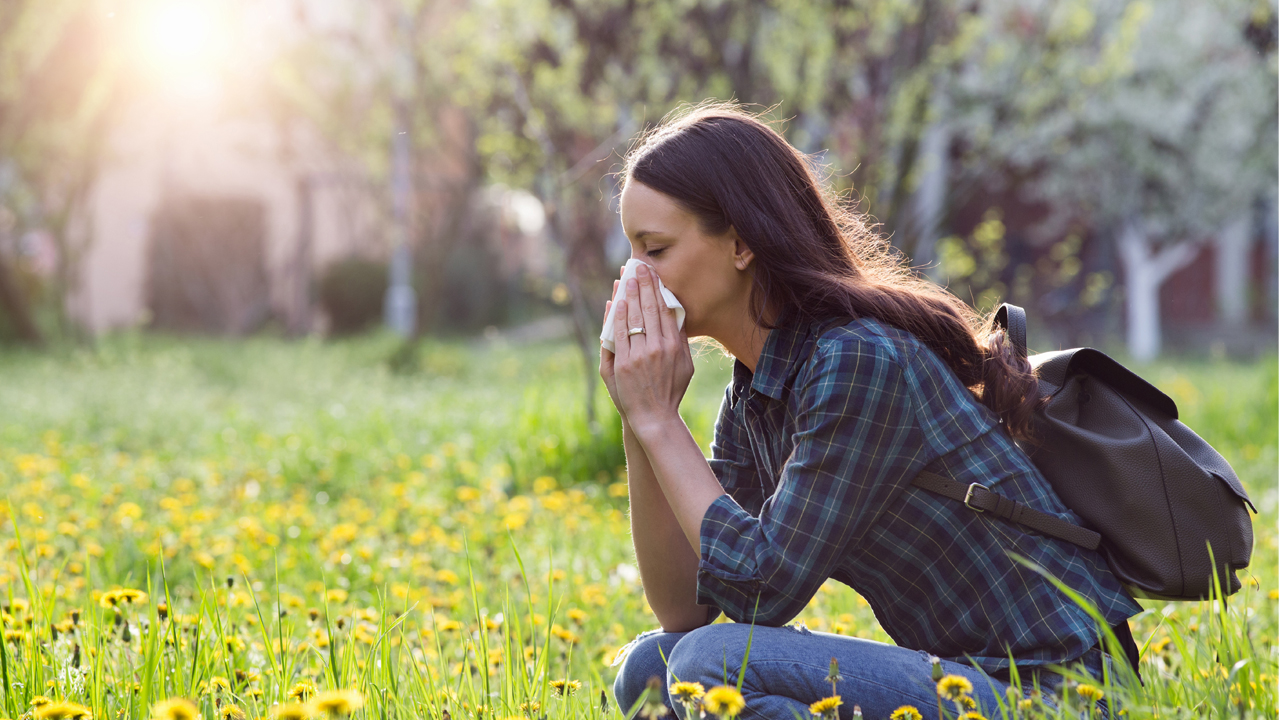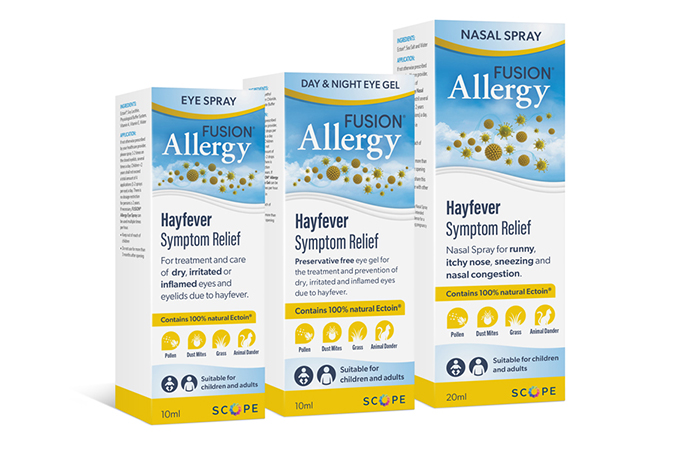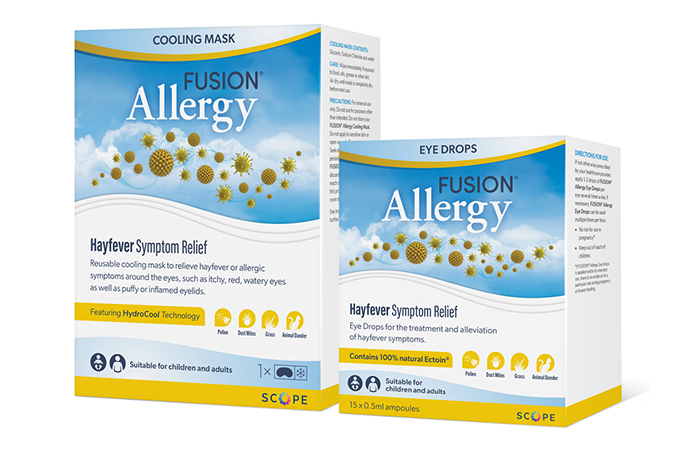In Common conditions
Follow this topic
Bookmark
Record learning outcomes
Hay fever affects around a quarter of adults in Britain, and the effects of climate change could mean sufferers experience symptoms for longer each year. Other nasal conditions are set to become more important in pharmacy too, with the Pharmacy First sinusitis service proving popular.
In the UK, some 26 per cent of adults and 15 per cent of children have hay fever – and incidence has trebled in the last 20 years, says Allergy UK.
Our allergy rates are among the highest in the world, with 21 million people affected. Around one in 10 GP appointments are allergy-related, says Allergy UK, and it is calling for each ICB to have a specialist allergy nurse at primary care level to improve patient outcomes.
We know that some pollen types are becoming more potent, and that an earlier start to the season means hay fever sufferers have to cope with symptoms for longer. Some of this is due to climate change, and if temperatures continue to rise, oak and grass pollen seasons may start even earlier, with some sufferers beginning their hay fever season in January or February in future.
George Sandhu, deputy pharmacy superintendent at Well Pharmacy, says: “Hay fever is an important category for community pharmacies. Customers often need medication quickly, with symptoms having a rapid onset. Community pharmacies are accessible and can offer expert, personalised advice, with the majority of treatments available over the counter.”
Helping customers to cope
Living with an allergy such as hay fever can have a serious impact on wellbeing and quality of life. Allergy UK has seen an increase in calls to its helpline related to emotional wellbeing in the last few years. Over a third of its callers are expressing anxiety, depression, frustration, isolation or PTSD. “Hay fever can have a huge impact on quality of life if not treated or well managed. It can lead to increased irritability, lack of sleep and ability to concentrate at work or school,” says Margaret Kelman, specialist allergy nurse at Allergy UK.
Studies have linked allergic rhinitis with an increased risk of depression. One study published in Frontiers in Psychiatry (Allergic Rhinitis and Depression, Qingdao University, China) found an estimated 20.6-38.7 per cent of allergic rhinitis patients had depressive symptoms, with a risk 1.82 times higher than people who don’t have hay fever, while those with severe allergic rhinitis had a 2.7-fold increased risk. The researchers found that nasal symptoms associated with allergic rhinitis contributed significantly to depression, which may be related to their effect on sleep. Patients who also had asthma and sinusitis had an even higher increased risk of depression.
Other research carried out by Dr Reddy’s Laboratories found that a number of participants felt anxious because of the unpredictable nature of their allergies. They reported feeling embarrassed in social settings and said they avoided outdoor activities.
Aeroallergens explained
Aeroallergens are airborne particles that cause or worsen allergic conditions. The two most common are pollen and fungal spores. Aeroallergens can also trigger asthma symptoms: pollen allergen is found in 80-90 per cent of children with asthma and 40-50 per cent of adults with the condition.
The three main types of allergenic pollen are grass, weed and tree pollen. Grass pollen is the main cause of allergy in the UK, while birch is the main cause of tree pollen allergy.
“Each pollen type has a different season. Therefore, it can be helpful to identify which pollen types an individual is affected by so that medication or other preventative measures can be taken in advance. Using the pollen forecasts and pollen calendar can assist with understanding when the different pollen seasons occur. Regional pollen calendars and a weekly summary of the different pollen airborne types can be found on the university of Worcester website,” says the university’s Dr Beverley Adams-Groom.
Advice to pass on
“There are certain steps pharmacists can take to ensure patients are getting the best from their medication,” says Kelman. “Does the customer know how to take their inhaled corticosteroid correctly? If not, you can demonstrate or direct them to online resources. Is the customer taking the medication as prescribed? Are they taking the correct dose?”
She advises referring customers if symptoms don’t improve or worsen when taking daily allergy medication.
Max Wiseberg, allergen expert and managing director of Haymax, says: “Advise your customers to start taking antihistamines and steroid nasal sprays a few weeks before the season starts. If it’s too late and the customer is already suffering, these medicines will still help. Many remedies can be complementary to each other.”
Sandhu advises: “Pharmacy staff should consider the individual sufferer’s symptoms, preferences and medical history. If they are taking any medication, consider any possible interactions. Pharmacy teams should also remember that nasal sprays and eye drops are useful products to use alongside antihistamines.”
Numark’s lead information services pharmacist Kenny Chan says: “The best advice is to treat hay fever early, as prevention is key. Antihistamines are more effective if taken before symptoms start.”
Nick Linton, head of UK country operations for Sanofi Consumer Healthcare, says: “Pharmacists should try to have a conversation with customers about how they manage their symptoms, discuss early treatment and see if a different antihistamine or combination of remedies could be more beneficial.”
At Dr Reddy’s UK, country head Kristine Oberte says: “It’s important to realise that many hay fever treatments that come in the same format do not contain the same active ingredients, so are not comparable and may target different symptoms altogether. Hay fever sufferers may need to try a couple of products before they find the one suitable for relieving their symptoms most efficiently.”
It’s important to talk to your customers about prevention advice, says Kelman. She advises:
- Wear a mask, wraparound sunglasses and a hat with a peak or large brim to keep pollen allergens out of the eyes and face
- On high pollen days, sufferers should shower or bath, wash hair and change their clothes when they arrive home. This will help to prevent continued exposure to the pollens indoors
- Keep windows closed. This is most important in the early mornings, when pollen is being released, and in the evening, when the air cools
- Avoid mowing lawns or raking leaves
- Avoid drying clothes/linens outside when pollen counts are high
- Wipe pets down with a damp cloth to remove pollen from their coats.
“Advise your customers to start taking antihistamines and steroid nasal sprays a few weeks before the season starts”
Hay fever has always been an important category for us. With the introduction of the Pharmacy First service this winter, sinusitis has become more popular, and we are seeing more customers come to us to ask about this. For hay fever, customers want to know if it is a cold or an allergy. For sinusitis, they ask if it’s a cold or congestion and how do they know if it’s sinusitis? The Clarityn brand is popular for us. Under a PGD, we can now prescribe steroid nasal sprays and these are very popular. Also popular is Otrivine nasal spray, and the saline nasal sprays do really well too. We are now the first port of call for hay fever, and more and more people will come to us first for sinusitis. Small packs of antihistamines and saline sprays can be put on GSL display for customers to browse and read about the products.
This has remained an important category even though some products may be purchased from other sources such as corner shops and supermarkets. Typical questions are around seasonal allergic symptoms. With regard to nasal symptoms, these may manifest as a runny or itchy nose and/or palate. Products that sell well are mainly antihistamine tablets, antihistamine liquids and eye drops. The nasal sprays not so much, although I tend to recommend them if a patient is experiencing mainly nasal symptoms. Tablets that sell well are usually the generic ones as they tend to be cheaper. I, however, like to recommend Benadryl Allergy Relief, where suitable, as it is non-drowsy and can be taken eight-hourly. Optrex Allergy Eye Drops are popular, and for nasal symptoms, it’s Beconase, Pirinase and Clarinaze.
Hay fever continues to be an important category for our pharmacy, and sinusitis has become more so since the Pharmacy First service was introduced. Questions customers ask about hay fever are mainly about how to take their medication. So many don’t realise that you need to take it daily for best results, so we talk to them about this. Allevia is our top seller, with Clarityn and Piriton also popular. We’ve definitely seen more customers coming in about hay fever over the last year or so. I think education is getting better and patients are more aware of the condition. I’d advise keeping a variety of options in stock, including eye drops and nasal sprays. Patients have different symptoms, so it’s important to be able to cater to their needs.
Climate change and the pollen season
You may have heard some of your customers complaining that their hay fever seems to be starting earlier than it used to or is lasting for longer. Recent studies have shown that some types of pollen and fungal spores are being released earlier and for a longer duration as the earth’s temperature rises.
Dr Beverley Adams-Groom, senior palynologist and pollen forecaster at the University of Worcester, explains: “The early tree pollen types – hazel and alder – are starting earlier, but birch may have reached the limits of how early it can start. The first high pollen days for oak and grass pollen are getting earlier. In terms of severity, tree pollen is getting worse for alder and birch in the central and western areas of the UK. This is due to increasing temperatures in June of the previous year, when pollen is set in flower beds. Warmer temperatures then allow for increased pollen production. Grass pollen severity can be affected by weather being too hot during the flowering season, causing flowers to close up or die off. Since we are seeing a trend to hotter June and July weather, this effect could occur more often.”
According to the UKHSA’s 2024 Health Effects of Climate Change report, evidence suggests there has been a significant trend towards higher concentrations of pollen (such as birch) or increased length of the pollen season (oak). The occurrence of the first high day for grass pollen annually is also getting earlier, and heatwaves are predicted to shorten the season’s duration. In future decades, the first high pollen day is likely to occur earlier for alder, oak and grass pollen, says the report.
Fungal spores are being released earlier, associated with warmer temperatures in spring and summer, and higher rainfall. “In a warmer and wetter future climate, there could be a further advance in the start of the season for many spores,” says the UKHSA report. “The way pollen seasons are likely to evolve under climate change depends on the interaction of various factors, particularly changes in the weather, the potential for extreme weather events, increasing CO2, pollution levels, land use changes and phenology [the timings of seasonal biological events].
“Of all the factors acting on pollen seasons, weather and climate have the greatest impact.”
“Grass pollen severity can be affected by weather being too hot during the flowering season, causing flowers to close up or die off. Since we are seeing a trend to hotter June and July weather, this effect could occur more often”
Brand In Sight
For a natural approach to hay fever relief, the Fusion Allergy range is proven to be as effective as antihistamines at relieving allergic symptoms in the eyes, eyelids, and nose. Containing the naturally occurring molecule Ectoin, the drug-free and preservative-free formula creates a barrier against allergens while moisturising the lining of the nose and reducing inflammation. A marketing campaign will highlight the brand’s family-friendly formulation this year.
Scope Healthcare 0808 175 3200
Pharmacy First sinusitis service
Acute sinusitis (in over 12s) is one of the seven common conditions included in the Pharmacy First service.
Non-antibiotic treatments should always be offered to patients first. For a patient to be offered an antibiotic, they must have had symptoms for 10+ days; have at least two indicators for acute bacterial rhinosinusitis (ABRS), and have tried an intranasal steroid for 14 days with little improvement.
“We have found that customers are responding very well to the new service. The ability to get expert advice without waiting for a GP appointment has been very welcomed,” says Sandhu.
In practice: Gareth Evans, Wansford pharmacy, Peterborough
“Sinusitis treatment is by far the most popular Pharmacy First service at the moment, but we anticipate that this will drop off over the summer months.
We are getting lots of referrals from the GP practice we are associated with, but only a few walk-ins so far. I don’t think patients are getting the message yet that they can just come to us for sinusitis and don’t need to call their GP surgery first.
The service is most definitely freeing up GP time, but we are a lot busier as a result. I think even the patients are recognising that pharmacist time is getting more eroded as we take on these services.
I’ve already had a couple of disagreements on the phone regarding antibiotic prescribing. I think pharmacists are going to be very good at sticking to the guidelines and not giving out antibiotics unless they really are required.
The clinical pathway is clear; we just need the confidence and practice now to carry it out. It’s important to take your time and ask all the questions you need to. It’s a good idea to have the questions prepared on a sheet of paper, and that way other members of the team can ask customers the initial questions to save you some time.
Be strong and consistent with your message about when antibiotics are needed/not needed. Pharmacists have been dealing with sinusitis for years, so we do really know what we’re doing.”
In practice: Lindsey Fairbrother, Good Life Pharmacy, Hatton, Derbyshire
“The sinusitis service has been fairly popular. Customers come in and are not sure what they have when they have nasal congestion, so we speak to them and ask questions to find out whether it could be sinusitis. Our customers are delighted by the service and the easy access to a health professional.
What’s not been useful is that the two steroid nasal sprays listed on the PGD have been out of stock and we can’t substitute anything else for those that are listed. This is confusing for customers and annoying for us.
Apart from that, we’ve found the service is working well for us, but that’s mainly because I have such a good team here and always have plenty of staff so that I have the time to do these consultations. We tend to contact patients and give them an appointment, which works better for us than walk-ins.
The clinical pathway is good, but the main issue is to determine whether the patient has had symptoms for 10+ days first. It’s important to stick to your guns about antibiotics and when they are/are not needed.”
Market update
The total OTC Allergy market is worth £214 million, of which total hay fever is £182m (oral £134m, eye £14m, nasal £32m). Sales of oral hay fever treatments are up by 13 per cent, according to Circana Total Market Data for the year to 2 March 24.
Kristine Oberte from Dr Reddy’s UK advises displaying hay fever remedies in pharmacy hot spots. “Products placed in hot spots may increase sales up to three times versus other locations. Placing advertising material of a newly launched product being featured in the media helps to attract customers to the category too.”
Alison Cullen at A.Vogel advises having a range of products targeting different symptoms and suitable for different age groups. “Customers are also becoming more aware of ingredients – more prefer naturally derived ingredients,” she says.
At Well, George Sandhu advises: “Provide personalised recommendations based on individual needs and preferences.”
And Numark’s Kenny Chan says: “Often, it’s not one single product that will provide relief from all symptoms. Customers may need a combination of products. Ask questions to find out what is bothering them the most. Also find out what they have tried already. Most will say they have tried an antihistamine but it hasn’t worked. Find out which one they tried.”
Sanofi’s Nick Linton advises: “Impactful point of sale and signposting could help more people navigate shelves to find the treatments available. Conversations with people buying cold and flu treatments during peak hay fever months could help identify those newly suffering from allergic rhinitis symptoms and ensure they start the appropriate treatment as early as possible. It is also important to offer a wide range of antihistamines as different molecules work differently and therefore suit different people.”






